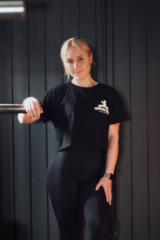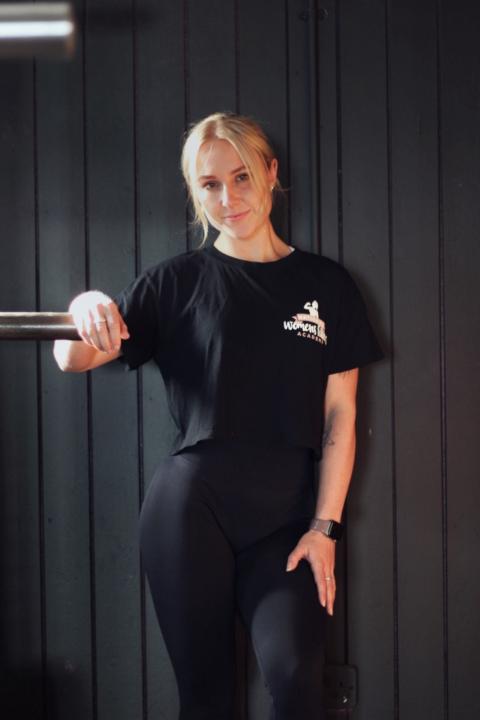Activity
Mon
Wed
Fri
Sun
Oct
Nov
Dec
Jan
Feb
Mar
Apr
May
Jun
Jul
Aug
Sep
What is this?
Less
More
Memberships
Performance Principles
16 members • $99/m
6 contributions to Performance Principles
Reposted to here as not sure where should post
Also - maybe a topic to discuss, I have client who’s knees were sore, we did all of the things to address the issue and have been managing to progress and get stronger - however when we do something different/ that used to trigger the knees she complains of a tight feeling across the knee but not pain. Like where is the line between a mental block to certain movements that used to hurt and actual pain that is cause for concern, like as a coach without feeling what they feel it’s hard and a little scary to progress through someone’s discomfort but when they say it’s not pain it’s just tight, is that an issue or is that a mental block along with normal muscle fatigue from new exercises.
0 likes • Aug 1
@Mike O'Donnell so we had been doing reverse banded heel elevated squats, progressed to cable and now body weight which is all fine, and then in a class she did reverse lunge ( the exercise was walking lunges for everyone but adapted) wall sit and then when she came today said they had been tight from the class but not sore and then she was more “aware” of them but not pain…
📅 This Month Inside: August Roadmap
Here’s what’s coming inside the group this month — each piece designed to help you coach with more clarity, confidence, and precision. Based on the questions and comments that have come in so far, this is what to expect... 🔍 1. Live Client Assessment Breakdown (Loom Drop) I’ll walk you through an actual client movement assessment — ➡️ What I saw ➡️ My thought process in real time ➡️ What it told me about programming decisions No fluff — just real-world coaching logic. This will go live in the Movement Assessment Toolkit section next week. 🧠 2. New ‘Principles in Practice’ Mini-Lessons • How to practically progress and regress exercise in a way that makes sense • Bridging the gap between assessments and programming • Understanding relative strength for better exercise selection Short, actionable, principle-first. Expect 1–2 of these per week. 💬 3. New Thread Posts You’ll see more behind-the-scenes posts on:• How I used the Movement Assessment Toolkit to triple my online sign-ups • Why clarity builds trust — before a single rep is performed • The most overlooked part of buy-in (it’s not what you think) Feel free to jump in, share, ask questions — that’s what this space is for. 👇 What You Can Do Now - 🔔 Turn on post notifications - 📌 Watch the Toolkit Walkthrough if you haven’t - 🧠 Drop any assessment or programming dilemmas below — I might use them in a future breakdown Let’s make August a big one. — Mike
0 likes • Aug 1
Also - maybe a topic to discuss, I have client who’s knees were sore, we did all of the things to address the issue and have been managing to progress and get stronger - however when we do something different/ that used to trigger the knees she complains of a tight feeling across the knee but not pain. Like where is the line between a mental block to certain movements that used to hurt and actual pain that is cause for concern, like as a coach without feeling what they feel it’s hard and a little scary to progress through someone’s discomfort but when they say it’s not pain it’s just tight, is that an issue or is that a mental block along with normal muscle fatigue from new exercises.
Use #cases to post real client challenges you want feedback on...
Suggested format: - Client situation (age, training background, goal). - Problem (pain, limitation, performance issue). - What you’ve tried so far. - Where you need input. - Make sure to post as a new post for every case so it doesn't get lost in the weeds. Use comments on a specific post for discussion around the specific case in question. This way, feedback stays principle-driven and actionable.
0 likes • Jul 30
Also - I enjoyed the movement assessments you put up the videos there, and where it’s simplified down to where you said essentially if the client can’t do X that means that Y needs to be improved. It can be hard to wrap head around some of the biomechanics but when it’s broken down like that it’s very helpful! Also things like once you’ve identified the issue and managed to work on the basics of getting that right, when is ok to progress to the next exercise and maybe a progression idea timeline (not actual times) but like for example - Mary preseneted with knee pain and show the movement assessments where it’s marked the possible cause of this, then we started with XYZ and then progressed to X in time and why you did that, what could be the next possible progression and why - example, reverse banded squat / anterior load and so on, I hope this makes sense? Just an idea for troubleshooting and how to deal with it and progress, of course there’s no one size fits all but just something to make it more entry level understandable 😊😊
0 likes • Jul 30
AAAAAND while I’m on a roll I may as well keep going, so things like trying to get someone to move better through the hip for an RDL would / could use B stance as a way to do that but from my experience some clients don’t grasp the b stance and then get in their own head and so I find it’s quicker/ easier for them to do SL hip thrust but does that do the same thing as what a b stance RDL would? Again I hope this makes sense I’m trying to make the message not too long.
📍New Mini-Lesson Uploaded – Band-Assisted RDL: A Coaching Tool Worth Using?
Just added a short breakdown in the Principles in Practice section sharing my current lens on the band-assisted RDL in response to a question that came in through a thread (pinned in the classroom section) — including how I think about its utility, limitations, and where (if anywhere) it fits into the teaching or training process. This is not a definitive stance — just an exploration of ideas based on principles, constraints, and what we’re actually trying to influence when coaching movement. If you’ve used this variation before: 🧠 What was your reasoning? 🔍 What did it help you change or communicate? 💬 Do you still use it — or did you move away from it? Head to Classroom->Principles In Practice to view the full module. Would really value your thoughts in the comments — feel free to agree, disagree, or offer a different lens entirely. That’s what this space is for. Let’s unpack it together.

WHY A BAND ASSITED/ cable assisted RDL?
Seen someone doing this the other day and wondered peoples opinion on it https://images.app.goo.gl/pb2HY
1-6 of 6


